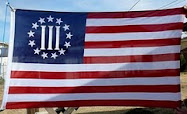This paper presents the first-ever comprehensive ranking of the American states on their public policies affecting individual freedoms in the economic, social, and personal spheres. We develop and justify our ratings and aggregation procedure on explicitly normative criteria, defining individual freedom as the ability to dispose of one’s own life, liberty, and justly acquired property however one sees fit, so long as one does not coercively infringe on another individual’s ability to do the same.
This study improves on prior attempts to score economic freedom for American states in three primary ways: (1) it includes measures of social and personal freedoms such as peaceable citizens’ rights to educate their own children, own and carry firearms, and be free from unreasonable search and seizure; (2) it includes far more variables, even on economic policies alone, than prior studies, and there are no missing data on any variable; and (3) it uses new, more accurate measurements of key variables, particularly state fiscal policies.
We find that the freest states in the country are New Hampshire, Colorado, and South Dakota, which together achieve a virtual tie for first place. All three states feature low taxes and government spending and middling levels of regulation and paternalism. New York is the least free by a considerable margin, followed by New Jersey, Rhode Island, California, and Maryland. On personal freedom alone, Alaska is the clear winner, while Maryland brings up the rear. As for freedom in the different regions of the country, the Mountain and West North Central regions are the freest overall while the Middle Atlantic lags far behind on both economic and personal freedom. Regression analysis demonstrates that states enjoying more economic and personal freedom tend to attract substantially higher rates of internal net migration.
The data used to create the rankings are publicly available online at www.statepolicyindex.com, and we invite others to adopt their own weights to see how the overall state freedom rankings change.
























